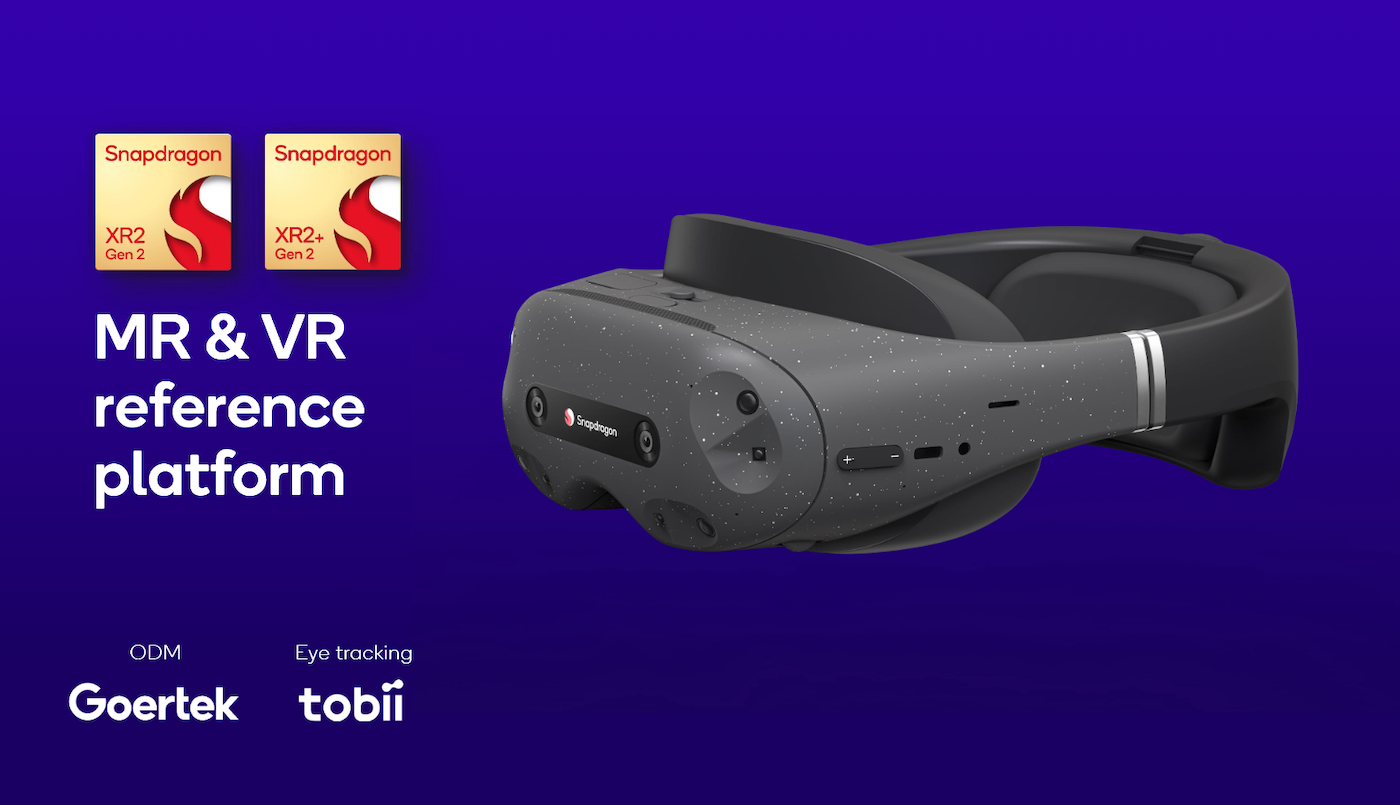At CES 2024 in Las Vegas, Qualcomm revealed its on-device AI for the Snapdragon XR2+ Gen 2 chip for virtual and mixed reality headsets. Then, during a Jan. 10 keynote, Qualcomm president and CEO Cristiano Amon spoke about enterprise use cases for virtual reality, including providing digital environments for training. He suggested three questions VR and MR might answer for enterprise: “How do you train people? How do you fully immerse in that digital environment? How do you evolve communications?” In addition, Amon talked about AI-enhanced phones.
Note: This article was updated to reflect the Jan. 10 Qualcomm keynote. TechRepublic is covering CES 2024 remotely.
Snapdragon XR2+ Gen 2 chips enhance mixed and virtual reality meetings
The Snapdragon XR2+ Gen 2 is the follow up to the Snapdragon XR2 Gen 2 Platform for AI, VR and mixed reality. The Snapdragon XR2+ Gen 2 offers the following:
- 4.3K by 4.3K per eye resolution.
- 90 frames per second.
- Supports 12 or more concurrent cameras for movement tracking
- Wi-Fi 7, Wi-Fi 6E, Bluetooth 5.3 and Bluetooth 5.2 connectivity.
The Snapdragon XR2+ Gen 2 has higher GPU frequency by 15% and CPU frequency by 20% compared to the Snapdragon XR2 Gen 2. That helps the Snapdragon XR2+ Gen 2 provide smoother “room-scale screens, life-size overlays and virtual desktops,” said Hugo Swart, vice president and general manager of XR, Qualcomm Technologies, Inc., in a press release.
SEE: In more CES 2024 news, HP debuted its Spectre x360 16 2-in-1 and Spectre x360 14 2-in-1 laptops capable of running local AI workloads. (TechRepublic)
“Our job was to create a computing engine that could make that technology (AI) run pervasively,” Amon said during Qualcomm’s CES keynote. “We are at a point that those (AI) capabilities in the processors and semiconductors are becoming available. The next step is to develop those use cases and applications.”
For businesses and employees, that means more efficient virtual desktops, virtual meetings and virtual demonstrations. Keep in mind that this doesn’t necessarily mean generative AI running on a headset; instead, the single-chip AI performance helps keep track of all the data required to merge digital and physical images.
“Spatial computing (is) going to be another computing platform that is going to eventually get a lot of scale,” Amon said during the keynote.
Qualcomm’s competing with Apple, Intel and NVIDIA
Samsung and Google will use the Snapdragon XR2+ Gen 2 in their planned virtual reality offerings (Figure A) running on Android, which could eventually compete with the Apple Vision Pro. The Snapdragon XR2+ Gen 2 currently competes with Intel’s AI PC technology for lightweight devices and automotive, as well as with NVIDIA’s semiconductors.
Figure A

Qualcomm looks ahead to AI-enhanced phones
During his keynote, Amon discussed Qualcomm’s history in the mobile phone space. Developing chips on which to run AI represents an evolution of mobile device technology, he said, but he doesn’t predict AI-powered devices will replace today’s phones.
Instead, Amon said, “What’s going to happen now is the phone is going to have a different role, which is not only what it used to do where the phone is good for all the apps you have, but also the phone is going to be communicating with the cloud. The phone is not going anywhere, but it is going to be enhanced by AI.”
For example, Amon said, a person might ask a generative AI assistant to call an Uber. Instead of using the Uber app on the phone, the generative AI assistant may connect directly to Uber through the cloud.
Qualcomm’s car tech news at CES 2024
Qualcomm continued the classic CES trend of showing off the latest automotive tech with its Snapdragon Digital Chassis platform, which enables connected car services for on-the-go work and life efficiency. Other connected car offerings from Qualcomm being demoed at CES 2024 include:
- Snapdragon Ride Platform, which helps global automakers and Tier-1 suppliers build automated driving solutions up to Level 3 driving assistance functions such as lane keeping and automatically maintaining speed.
- Snapdragon Ride Flex SoC, centralized computing for digital cockpit, driver assistance and certain autonomous driving functions on a single system-on-chip.
- Snapdragon Car-to-Cloud Services provide a way for organizations to push upgrades to connected car services.
- A highly efficient cloud-native environment for automotive application development and deployment provided in collaboration with AWS.
- Snapdragon Digital Chassis SoCs for Two-wheelers for small vehicles and agricultural or farming vehicles.
One of the upgrades is Qualcomm’s “next generation Gen AI-enabled digital cockpits” for generative AI on the edge (in this case, on the go). That means cars, depending on individual brand and app offerings, can run generative AI apps for dynamic updates of information relevant to drivers on the road. Services and recommendations can be personalized, and apps can anticipate the driver’s preferences and needs.
“Our commitment to advancing automotive technology in support of global automakers, Tier-1 suppliers and our ecosystem partners is helping shape the future of software-defined vehicles and is accelerating us into a new era for the automotive industry,” said Nakul Duggal, senior vice president and general manager of automotive and cloud computing at Qualcomm Technologies, Inc., in a press release.
Source of Article



